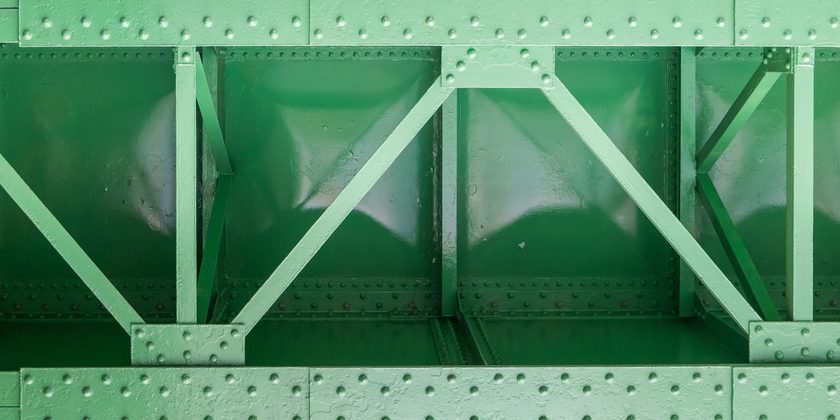By global standards, US steel is already pretty green – and pretty pricey.
The American Iron and Steel Institute credits EAFs in its most recent industry profile with about 71% of US domestic steel production, compared with a 26% global average.
A round-up of estimated greenhouse gas emissions from the top four US steelmakers – Cleveland-Cliffs, Nucor, Steel Dynamics Inc and US Steel – from each company’s most recent sustainability report show a range of about 1.98 tonnes of carbon dioxide equivalent (CO2e) per 1 tonne of steel down to as low as 0.39 tonnes C02e per 1 tonne of steel, covering Scope 1 and 2 emissions, which are direct emissions generated by an entity or its subsidiaries and indirect emissions from energy used by an organization.
Scope 3 emissions are a little harder to pin down due varying definitions – most producers lump them in with raw material costs rather than assume the carbon emissions of heavy end-use emitters like automobiles.
Even there, however, at least one major producer – Steel Dynamics Inc – puts its Scope 1, 2 and 3 average emissions as low as 0.78 tonnes CO2e per 1 tonne of steel. The same sustainability report puts the global average around 1.91 tonnes CO2e per 1 tonne of steel, with the global blast furnace average at 2.33 C02e per 1 tonne of steel.
That cleanliness comes at a cost. Though environmental concerns are just one piece of the US price puzzle, they are partially reflected in the disparity between US, European and Asian prices.
Fastmarkets’ daily steel hot-rolled coil index, fob mill US Midwest was last calculated at $38.97 per cwt ($779.40 per short ton) on Wednesday May 15. This is against a backdrop of sideways-to-stagnant prices.
In contrast, Fastmarkets calculated its daily steel hot-rolled coil index, domestic, exw Northern Europe at €641.83 per tonne ($632.91 per short ton) on Thursday May 16.
Likewise, Fastmarkets’ weekly price assessment for steel HRC import, cfr Vietnam was $550-555 per tonne ($498.95-508.02 per short ton) on May 10.
Fastmarkets currently publishes green steel differentials for these European and Asian HRC assessments. The European green differential works out to $147.92-246.53 per short ton, while the Asian differential works out to $185.07-308.44 per short ton.
In a simplistic and possibly coincidental view, the European HRC price subtracted from the US HRC price is roughly the value of the European green steel differential.
When all steel is green, none is
It’s tempting to say that buying US HRC in general is buying green steel, but the industry can’t be complacent if it wants to retain or grow that premium, according to Greenway Steel founder Randy Charles.
“US-produced steel does represent global leading low emissions – for now,” he told Fastmarkets. “That will change rapidly in the EU given the incentive behind the ETS [Emissions Trading System] and carbon liability, as well as investments being made in new H2 technology.”
Earlier this year, one steel mill executive told Fastmarkets that they wouldn’t be surprised if carbon emissions ultimately become another tool in the US’ protectionist toolbox, similar to the Carbon Border Adjustment Mechanism in place in the EU.
Such a move would have bipartisan appeal, regardless of the victor in the US presidential election in November, the executive said. It would echo the 232 national security restrictions originally put in place by President Donald Trump – and maintained by President Joe Biden – and it would mollify environmental advocates and industrial concerns alike, as the US already has a leg-up on the green steel front.
In that scenario, a prospective US green steel differential may actually go negative, as the carbon costs for higher-emission steel add up; it may be cheaper to buy green.
A second executive likened the push for green steel to the bounty some states place on mercury switches, a once-common and toxic component of older cars being sent to the scrapyard.
Some states paid a bounty per switch, incentivizing their removal. Some states still do. And some moved to a voluntary system that did away with bounties entirely, putting the cost of removal and reporting on the scrapyard.
A carbon tax on steel would harm incentives to go green in search of higher profit and make it just another cost of doing business – a boon to a burden in just a few years, he said.
Ultimately, green steel will come in two primary shades, worldwide, Charles said – relative and absolute.
“The absolute basis, and lowest footprint, will carry the highest premiums for end users wanting, or even needing, to decarbonize supply chains.”
Discover how our suite of green steel prices can support your ‘green’ investment decisions while bringing transparency to the industry. Find out more.







